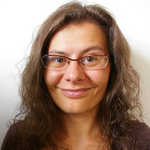Goldschmidt Conference 2013
Posted on 25 September 2013
Goldschmidt Conference 2013
25-30 August, 2013 Florence, Italy
By Kayla Iacovino, SSI Fellow and PhD Candidate at Department of Geography, University of Cambridge
Highlights
- Fantastic attendance of the poster sessions led to great feedback on my software
- Several talks concerning the use of software, data visualization tools, and web-hosted models in geoscience (this ranged from physical models of an erupting volcano with implications of risk management to visualizing all geochemical data from a suite of samples of a given type in a given region).
Event report
Goldschmidt is an annual event for geochemists, a group that includes those who study volcanoes, soils, chemistry of other planets, deep Earth chemistry, geobiology, and so on. It is quite a varied group with one common thread: they study the chemistry of the Earth. The conference is quite large, spanning five days and welcoming thousands of guests.
The highlight for me was in presenting my own research software and getting important feedback from the scientists who will eventually be using it. The program is a tool for analyzing FTIR spectra and is used to determine the concentrations of dissolved volatile species (e.g. H2O, CO2) in glasses. This is the first fully automated tool that we know of to allow the retrieval of dissolved volatiles from FTIR spectra. The technique behind the program is widely used by geochemists and has applications to volcanology (i.e. species dissolved in volcanic glass). The program, which is under development, was presented as a poster presentation. Many geochemists stopped by to ask about the program and how we are constructing it. I took the opportunity to ask THEM questions concerning the features they'd like to see in such a tool.
I received a lot of great feedback including robust ways to test the program's calculations and what aspects of the program need to be stated clearly in the paper will accompany its publication.
In addition, I generated a lot of interest about the program and of its parent program, AvoPlot (our program is a plug-in to AvoPlot).
There were also a number of talks on new database systems being developed to create large-scale models of geological processes. Some of these talks concerned creation of the actual database, some concerned how to use these data to create a large model (and what things to consider when doing so), and some concerned software that could iterate through large databases and display data meaningfully. In part, this was, for me, a great overview of what software, databases, and online models are available now. One such resource, which I was aware of, but really got to see its functionality during Goldschmidt, is the VHub website, which is a repository of useful volcanology-related software, models, and tools.
Geologists are getting better at utilizing computer programs and models and making them sustainable, but there is always room for improvement with the help of the SSI. I think that one thing most geoscientists are unaware of is the option to publish a piece of software as a stand-alone publication. One journal in particular, Computers in Geosciences, has facilitated this, however I feel there is still a place for something like the Journal of Open Research Software (JORS), where one could publish software without necessarily detailing its geologic implications. In addition, what is unclear to most is the review process behind software published in Computers in Geosciences, and how that might differ from JORS, which is focused primarily on the software and less on the science.

